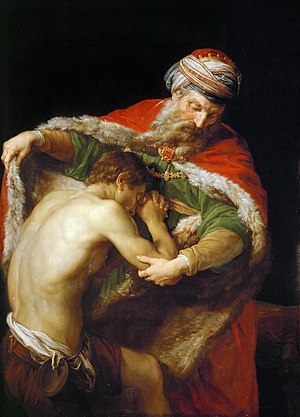But this time, we convinced her to contract a short video which captured a slice of the non-profit’s work. Tears flowed and contributions were nearly double over the year before.
Emotion is the way to connect with people.
Jesus, the master storyteller, used stories – parables – connect his meaning with his listeners. Many of his parables have forged their way into popular culture.
Many are familiar with the Prodigal Son, the Good Samaritan, the Lost Lamb. All parables.
What did Jesus use in his parables that worked so well and have made his stories timeless?
He zeroed in on metaphors. His meaning came through the story itself like meaning comes through a painting or beautiful music.
The old adage that a picture is worth a thousand words plays into our understanding.
Jesus’ parables were extended metaphors. They didn’t illustrate an idea; they created a reality.
In our culture today, we use metaphors which might be mysterious to another time and culture. For example, I had a high-speed internet sort of day, with information and contacts zooming by me.
What would that have meant to my 1890 immigrant grandfather? Or to Plato or Socrates?
Another intriguing comparison would be a visual metaphor which our modern technology allows us to use. A familiar example could be an advertisement which juxtapositions a photo of a sports car with that of a panther. We compare qualities such as speed and power.
My point is that metaphors often play within history. To understand Jesus’ parables – his metaphors – we need to study his historical context.
In the Prodigal Son parable, for example, the story gains a new depth of meaning when we understand more of the historical context. In the Middle East, a young man asking for his inheritance while his father was still alive, was really saying, “Dad, why don’t you drop dead?” The father would be expected to get angry, slap his son, and drive the young man from his presence.
None of those things happened in the parable.
Jesus’ listeners would have been intrigued by the alternate tale. We can understand the son’s decision to go home and work as a servant in that context. But why didn’t the father react as expected? He allowed the son to leave and he celebrated the son’s return. Jesus’ meaning included restoration rather than revenge, welcome rather than division.
By use of a story, Jesus presented an alternative to driving away a prodigal. In this parable, the father instead celebrated the return of a beloved son. “We had to celebrate and be glad, because this brother of yours was dead and is alive again; he was lost and is found.” (Luke 15:31-21 NIV)
The emotions generated in this parable, through storytelling and metaphor, created a connection to Jesus’ audience and emphasized his meaning.

